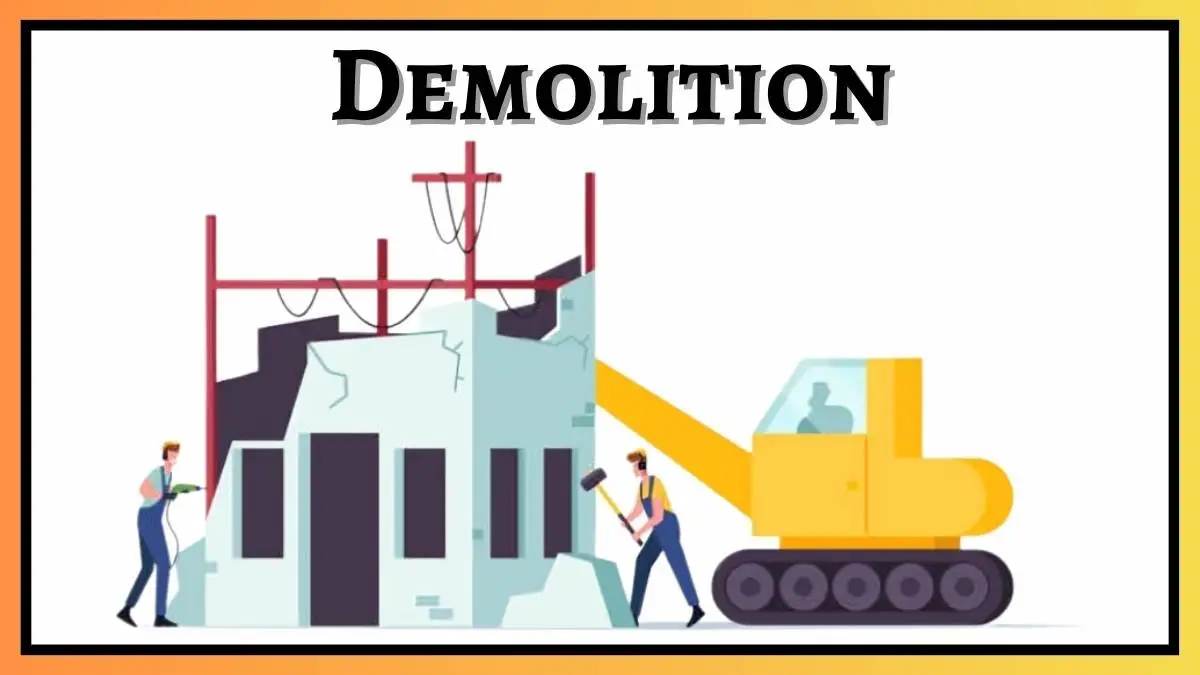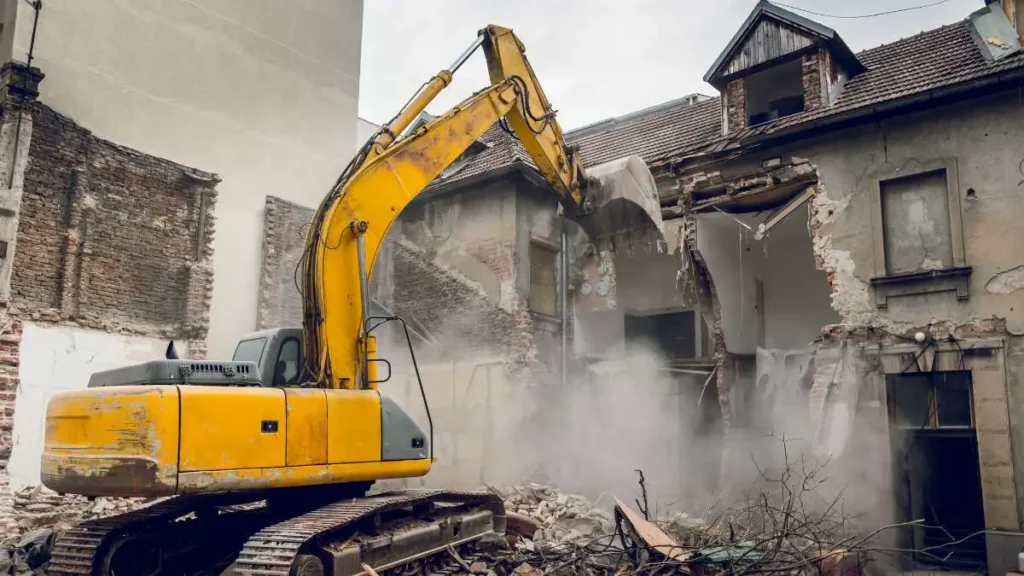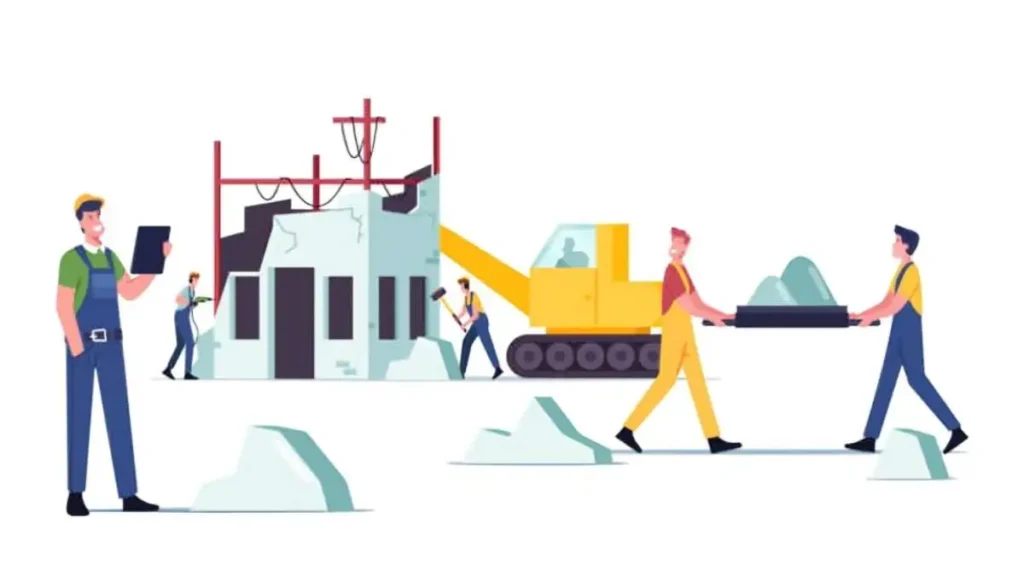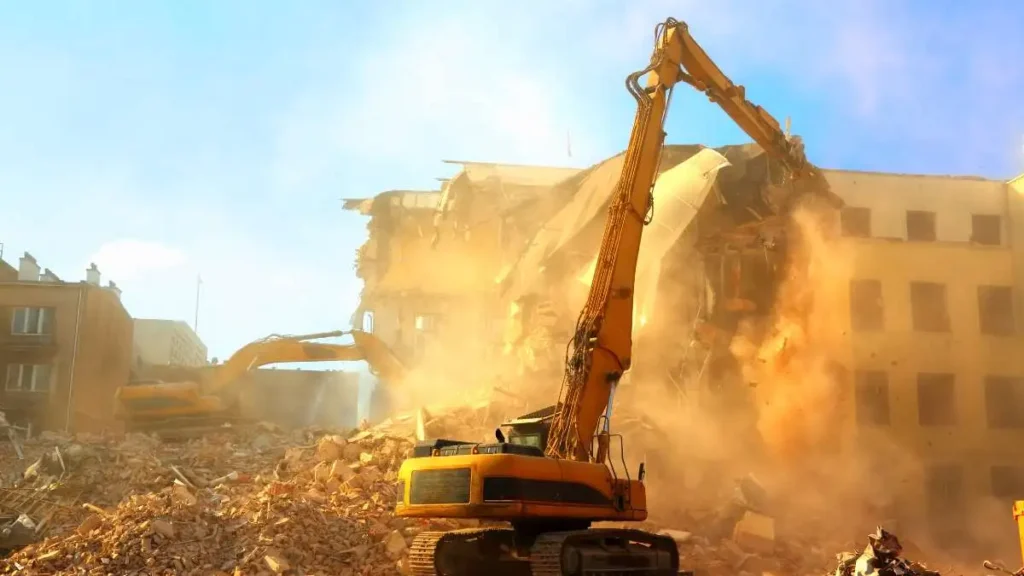HOME IMPROVEMENT
Understanding the Role of Demolition in Comprehensive Junk Removal

Demolition is an integral part of junk removal, especially when dealing with large-scale cleanups, renovations, or property redevelopments. It involves the careful dismantling and removal of structures or parts of structures, ensuring that the area is cleared efficiently and safely. This article delves into the role of demolition in comprehensive junk removal, highlighting its importance, processes, and benefits.
Table of Contents
The Basics of Demolition
What is Demolition?
Demolition refers to tearing down buildings or structures, either partially or entirely. It can range from simply removing a wall or shed to completely dismantling large buildings. Demolition requires meticulous planning, specialized equipment, and skilled professionals to execute the task safely and effectively.

Types of Demolition
- Interior Demolition: Involves removing interior walls, ceilings, and fixtures while preserving the exterior structure. Common in renovations where only certain parts of a building are updated.
- Selective Demolition: Focuses on removing specific components of a building, such as a roof or floor, without affecting the rest of the structure. Useful for partial renovations or expansions.
- Total Demolition: The complete teardown of a building or structure. Necessary for redevelopment projects or when a building is beyond repair.
The Role of Demolition in Junk Removal
Clearing the Way for New Construction
Demolition is often the first step in redevelopment projects. Clearing away old structures allows for new construction and improvements. This is essential for creating space for new buildings, landscaping, or other developments.
Efficient Space Management
Old or dilapidated structures can take up valuable space. By demolishing these structures, you can free up land for more useful purposes, whether it’s for new buildings, parking lots, or green spaces. This efficient use of space can significantly enhance property value and functionality.
Removing Unsafe Structures
Buildings that are old, damaged, or poorly maintained can pose significant safety hazards. Demolition helps eliminate these risks by removing structures that could potentially collapse or cause harm. This is particularly important in residential areas where the safety of occupants is paramount.
Environmental Considerations
While demolition involves tearing down structures, it also incorporates sustainable practices. Professional demolition services often recycle materials, reducing the environmental impact. Metals, concrete, wood, and other materials can be sorted and repurposed, minimizing waste.
The Demolition Process
Initial Assessment and Planning
Before any demolition work begins, a thorough assessment is conducted. This includes:
- Structural Analysis: Evaluating the stability and condition of the structure to determine the safest demolition method.
- Environmental Impact: Assessing potential environmental hazards, such as asbestos, lead, or other hazardous materials.
- Permits and Regulations: Obtaining the necessary permits and ensuring compliance with local regulations and safety standards.
Preparation
Preparation is key to a safe and efficient demolition. Steps include:
- Site Inspection: Inspecting the site to identify any potential hazards or obstacles.
- Utility Disconnection: Ensuring all utilities (electricity, water, gas) are safely disconnected to prevent accidents.
- Safety Measures: Setting up safety barriers, signage, and other precautions to protect workers and the public.
Demolition Execution
The actual demolition process varies depending on the type and scale of the project:
- Manual Demolition: Using hand tools and smaller equipment for precise, controlled demolition. Ideal for interior or selective demolition.
- Mechanical Demolition: Heavy machinery, such as excavators and bulldozers, is employed to tear down larger structures quickly and efficiently.
- Implosion: Using explosives to bring down large buildings in a controlled manner. This method requires careful planning and execution by highly skilled professionals.
Debris Removal and Site Cleanup
Post-demolition, the site is cleared of debris. This involves:
- Sorting and Recycling: Separating materials for recycling or disposal. Metals, concrete, and wood are commonly recycled.
- Debris Hauling: Transporting debris to appropriate facilities for disposal or recycling.
- Site Restoration: Ensuring the site is clean and safe, ready for the next phase of development or construction.

Benefits of Professional Demolition Services
Safety
Safety is a primary concern in any demolition project. Professional demolition services ensure that the process is carried out safely, minimizing risks to workers and the public. They adhere to strict safety protocols and use specialized equipment to prevent accidents.
Efficiency
Professional demolition services can complete projects quickly and efficiently. Their expertise and equipment allow them to handle complex demolitions with minimal disruption. This efficiency is particularly important in commercial projects where time is a critical factor.
Compliance
Demolition projects must comply with various local, state, and federal regulations. Professional services are well-versed in these regulations and ensure that all legal requirements are met. This compliance helps avoid potential legal issues and fines.
Environmental Responsibility
By incorporating recycling and sustainable practices, professional demolition services help reduce the environmental impact. They ensure that materials are disposed of responsibly, contributing to environmental conservation.
Practical Applications of Demolition
Residential Projects
In residential settings, demolition can be used to:
- Remove Old Sheds and Garages: Clearing out old structures to make way for new constructions or gardens.
- Interior Renovations: Tearing down walls to create open floor plans or update living spaces.
- Full Home Demolition: Removing unsafe or outdated homes to build new, modern residences.
Commercial Projects
In commercial contexts, demolition is essential for:
- Building Expansions: Removing parts of a building to add new wings or extensions.
- Redevelopment: Clearing old commercial buildings for new developments, such as shopping centers or office complexes.
- Site Preparation: Preparing land for new commercial projects by removing existing structures.

Industrial Projects
In industrial areas, demolition can:
- Clear Old Factories: Removing outdated industrial facilities to make way for new manufacturing plants.
- Site Remediation: Cleaning up contaminated sites by demolishing old buildings and removing hazardous materials.
- Infrastructure Upgrades: Facilitating the upgrade of industrial infrastructure by clearing old installations.
For reliable and professional demolition and junk removal services, consider companies like AJ’s Junk Removal, which ensures that every project is handled with expertise and care.
Conclusion
Demolition plays a critical role in comprehensive junk removal, enabling the safe and efficient clearing of spaces for new developments and improvements. Whether in residential, commercial, or industrial settings, professional demolition services offer numerous benefits, including enhanced safety, efficiency, compliance, and environmental responsibility. By understanding the importance and process of demolition, you can make informed decisions that contribute to the successful transformation and optimization of your spaces.
-

 GENERAL2 months ago
GENERAL2 months agoUncovering the World of кинокрадко: The Dark Side of Film Piracy
-

 GENERAL1 month ago
GENERAL1 month agoUnveiling the Art of преводсч: How Translators Bridge Language Barriers
-

 GENERAL3 weeks ago
GENERAL3 weeks agoChristofle – For Those Who Dream of Family Heirloom Silver
-

 YOGA1 year ago
YOGA1 year ago4 Person Yoga Poses for Beginners























